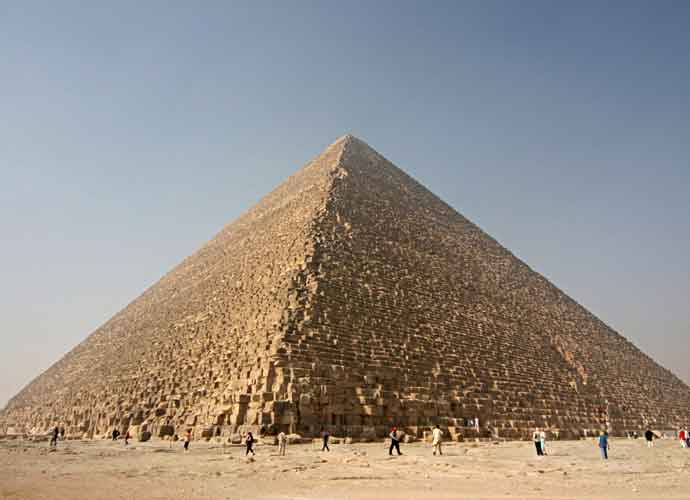

Scientists Discover A Void Inside The Great Pyramid Of Giza
The Great Pyramid of Giza is one of the Seven Wonders of the Ancient World and has towered over Egypt for over 4,500 years. The nearly 500 foot tall monument was built during the reign of Pharaoh Khufu and is believed to house his mummified remains.
After centuries of exploring the Pyramid of Khufu, archaeologists have uncovered a hidden “void” within the structure’s stones. An international team of researchers harnessed cosmic-ray collisions, a technique from the field of particle physics, to uncover the roughly 100 foot long unknown area.
Mehdi Tayoubi, co-director of the ScanPyramids project, explained the finding which was published in the journal Nature on Thursday. “We don’t know if it’s a chamber, a tunnel, a big gallery or things like that. We have chosen the word ‘void’ and nothing else because we don’t know what this void is.”
To make this discovery, researchers used muons, particles similar to electrons that form when cosmic rays from outer space collide with particles in Earth’s atmosphere. The muons created by the collision pass through matter where they lose energy and decay. Depending on the number of muons remaining after the collision, researchers can decipher if an area beyond the wall is a solid or empty space.
In 2016, Tayoubi and colleagues stumbled upon the hidden void while analyzing muon data around a passageway leading to the King’s Chamber of the pyramid. The team noticed an unexpected excess of muons above the Grand Gallery which prompted further investigation.
Although praised by many, Tayoubi’s team’s discovery was received more critically by archaeologists. Mark Lehner, an Egyptologist from Ancient Egypt Research Associates, expressed that previous work had already shown that the ancient Egyptians most likely constructed gaps in their pyramids to prevent collapsing.
Zahi Hawass, another Egyptologist and former Egyptian government minister and head of the scientific committee, was also critical of the finding.
“They found nothing,” Dr. Hawass remarked, noting that such construction gaps had been known of for at least two decades. “This paper offers nothing to Egyptology. Zero.”
Hany Helal, who is also a co-director of the ScanPyramids project, responded to the criticism, explaining that from an engineering perspective, it would not make sense to have such a big void above the Gallery if its purpose was to relieve pressure. He hopes the findings will generate an international discussion among archaeologists to discover the void’s purpose.
“We are sure there is a void,” he said. “Now let us continue our research.”
The tour comes in support of their 2020 album of the same, which became the…
https://www.youtube.com/shorts/t-JCNJo1mI0 Pope Francis made his last public appearance to give an Easter blessing to the…
President Joe Biden has been accused of photoshopping himself into his family's Easter picture this…
He said, “Something about that was so powerful and gut-wrenching…I just felt like that was…
Prince Harry’s wife, Meghan Markle, has reached out to her father-in-law, King Charles III, to…
Relatives of passengers aboard the flight previously expressed excitement and hope that the new search…